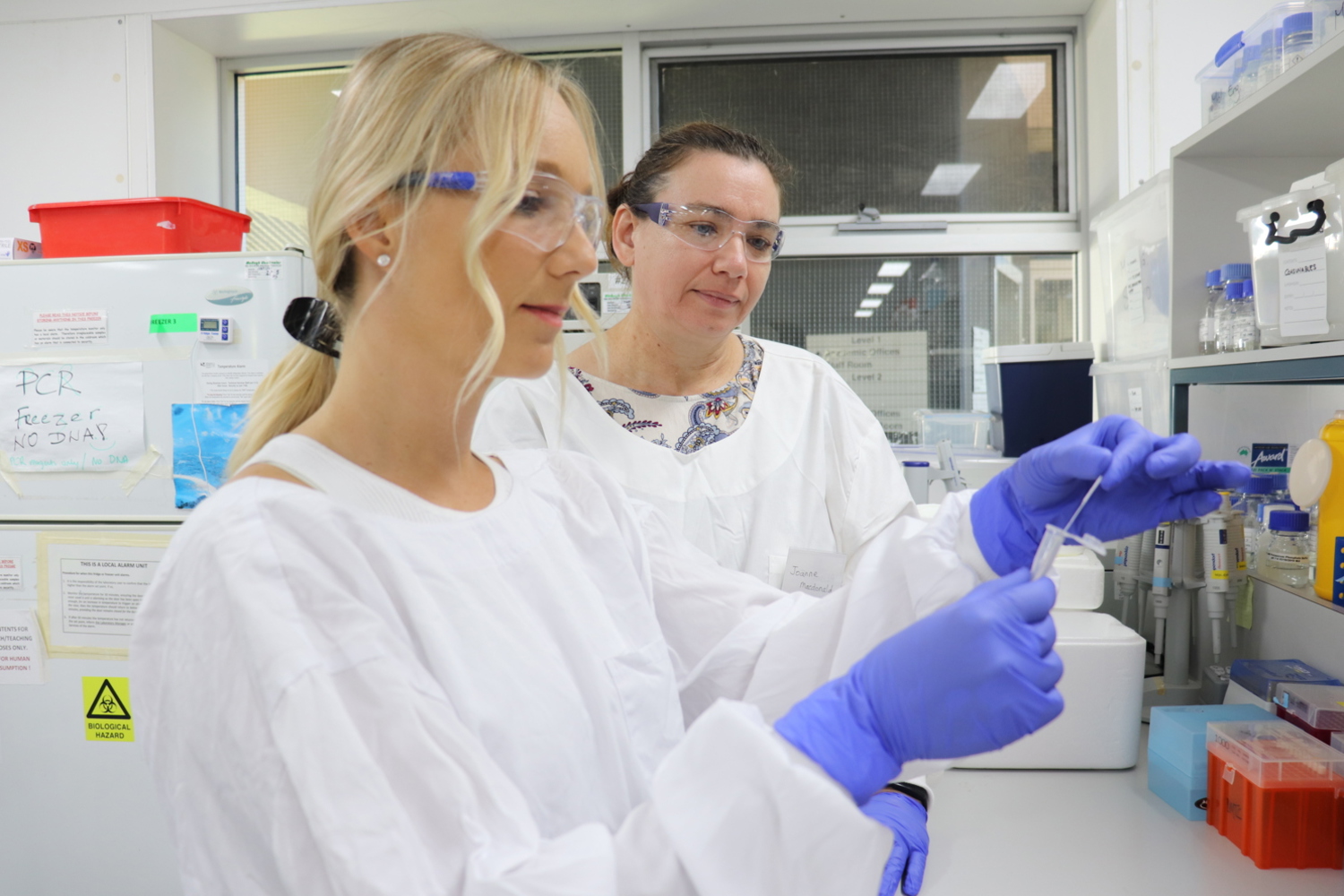A University of the Sunshine Coast researcher who has helped develop a simple dipstick test to screen for the highly infectious Nipah virus says rapid detection is critical to controlling deadly outbreaks.
In India, health officials are racing to contain a deadly outbreak of the virus, which is transmitted by fruit bats to humans and pigs. Severe symptoms can include confusion, seizures, coma, severe respiratory distress and encephalitis. It is fatal in 40 to 75 percent of cases.
UniSC Associate Professor of Molecular Engineering Dr Joanne Macdonald and postdoctoral researcher Dr Nina Pollak from UniSC’s Centre for Bioinnovation worked with CSIRO’s Australian Centre for Disease Preparedness on the research into the Nipah virus.
“We have developed a simple test to screen for Nipah virus where it is inactivated in the first step of the procedure, making it safe to perform testing outside of a lab,” Dr Macdonald said. The simple lateral flow dipstick shows a result, similar to COVID RAT screening.
The virus, which can spread between people through close contact with bodily fluids, or through respiratory droplets, typically leads to symptoms one to two weeks after infection. Dr Macdonald said people could carry and transmit the virus before knowing they were infected.
“Rapid detection is critical to control outbreaks. Currently, this requires samples to be shipped to a high containment laboratory to protect the people performing the test from becoming infected,” she said. “This can lead to a 1-2 day delay in obtaining the results, making it difficult to accurately understand an outbreak in real-time.”
Dr Macdonald said the research team was looking for collaborations to trial and assess their test in field conditions, so that that it could potentially be manufactured for use in future outbreaks.
“The test is portable for low resource use and can give results in 30 minutes. Such a test could be useful for healthcare workers, veterinarians, and other professionals, to rapidly detect the virus and help understand and contain outbreaks more quickly,” she said.
The research findings were published recently in Frontiers in Microbiology - link to story here.
Media enquiries: Please contact the Media Team media@usc.edu.au

